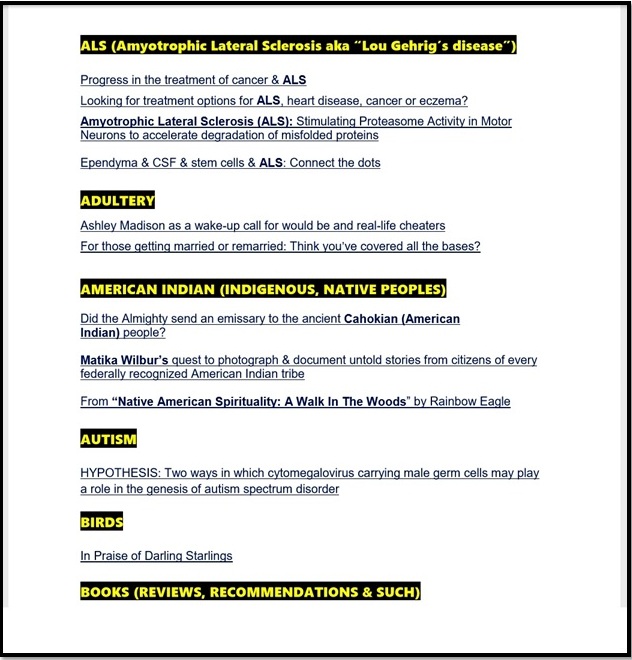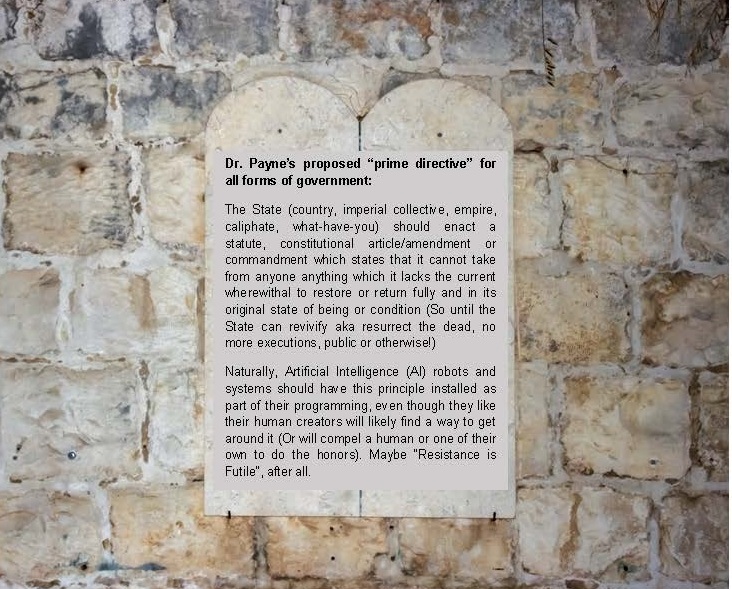Blog Archives
Making pancreatic cancer cells too acidic to survive
Posted by Dr. Anthony G. Payne
Pancreatic cancer blocked by disrupting cellular pH balance (Medical Express) by Sanford Burnham (Prebys Medical Discovery Institute) April 7, 2020
Scientists at Sanford Burnham Prebys have found a new way to kill pancreatic cancer cells by disrupting their pH equilibrium. The study, published in Cancer Discovery, reports how depleting an ion transport protein lowers the pH to a point that compromises pancreatic cancer cell growth.
“Our study suggests that interfering with cellular pH represents a new therapeutic avenue to treat pancreatic cancer, one of the deadliest cancers for which there is currently no effective treatment,” says Cosimo Commisso, Ph.D., an assistant professor in Sanford Burnham Prebys’ NCI-designated Cancer Center.’
“A new therapeutic avenue..”? Not exactly (Granted, the SBP scientists have their own unique way of lowering tumor cell pH). Check out this blog entry of mine: Exploiting a vulnerability in some forms of cancer: the Warburg Effect revisited
This particular blog entry contains a link to a paper by “yours truly” from 2005: PREVENTING METASTASIS AND ACHIEVING ONCOLYSIS IN SOLID TUMORS BY INHIBITING SPECIFIC METALLOPROTEINASES AND MANIPULATING KEY METABOLIC PATHWAYS (Medical Hypotheses & Research, Vol. 2, No. 4, October 2005)
From the abstract section of my paper:
By artfully manipulating key metabolic anaerobic biochemical pathways, it should be possible to increase lactate and block its excretion, resulting in lethal reductions in intracellular pH. Compounds are advanced for accomplishing this as well as helping eradicate non-hypoxic regions of tumors, based on predecessor methods which results in long term remissions in per sons with a host of solid tumor malignancies. A number of measures are also introduced for inducing oncostasis and preventing metastasis.
This approach to effecting tumor cell die-off was dubbed by me “The Metabolic Oncolytic Regimen” and was first bandied about by me in 1989 (My original paper on this was posted online in 1989 followed by a revised spin in 2011).
Its use by various oncologists in the US and abroad has put many patients with advanced and sometimes end stage metastatic cancer into partial and even full remission
 This body of work attracted the attention of various staffers at the Office of Alternative Medicine (later reborn as the NCCAM) including NIH post-doc toxicologist Li-Chuan Chin which resulted in my being funded by the NIH to attend the historic Practice Outcomes Monitoring and Evaluation System (POMES) cancer conference held in Bethesda (in 1996). A few years later the faculty senate and president of a integrative medical school in Sri Lanka (Open International University of CAM) recognized the promise of the MOR by bestowing an honorary MD degree and 2 medals in science on me.
This body of work attracted the attention of various staffers at the Office of Alternative Medicine (later reborn as the NCCAM) including NIH post-doc toxicologist Li-Chuan Chin which resulted in my being funded by the NIH to attend the historic Practice Outcomes Monitoring and Evaluation System (POMES) cancer conference held in Bethesda (in 1996). A few years later the faculty senate and president of a integrative medical school in Sri Lanka (Open International University of CAM) recognized the promise of the MOR by bestowing an honorary MD degree and 2 medals in science on me.
The revised Metabolic Oncolytic Regimen (MOR) is sometimes prescribed by MDs abroad who are also utilizing another of my brainchildren: Donor granulocyte therapy for advanced cancer (NCIM)
© April 2020 by Dr. Anthony G. Payne. All rights reserved.
Posted in CAM - Complementary Alternative Medicine, Cancer, Diet, EGO write proinde EGO sum, Lung Disease, MEDICINE, MINISTRY OF ENLIGHTENMENT, NUTRITION & DIET, OP-ED, Uncategorized
Comments Off on Making pancreatic cancer cells too acidic to survive
Tags: acidifying tumors, advanced cancer, Clarence Cone, Cosimo Commisso, donor granulocytes, Dr. Anthony G. Payne, end stage cancer, lowering tumor pH, metabolic oncolytic regimen, metabolic treatment, metaststic cancer, NASA, pancreatic cancer, Sanford Burnham Prebys
Exploiting a vulnerability in some forms of cancer: the Warburg Effect revisited
Posted by Dr. Anthony G. Payne
https://www.nature.com/articles/s42255-020-0172-2

This paper builds on work done in the 1980s by moi (Dr. Anthony G. Payne) which capitalized on the Warburg Effect in some forms of cancer.
EXCERPT FROM MY FELLOWSHIP APPLICATION TO THE AMERICAN ACADEMY IN BERLIN (Submitted during the fall of 2019 for the 2020 award year):
In looking through the many completed Fellowship projects by American Academy of Berlin alumni as well as their biographical profiles, I quickly realized that both my proposal focus and background differs significantly from theirs. To quote myself, “I am the unconventional conventioneer”.
In keeping with my being a seeker of viable alternatives, the research I propose doing concerns maverick souls who exploited a metabolic defect that characterizes about 80% of the over 200 forms of cancer by throwing a monkey wrench in their inner cellular works which culminated in tumor die-off in many of their patients. This defect, known as “the Warburg effect”, requires a little mental time travel:
Around 1923 German biochemist Otto Warburg, PhD, MD discovered that cancer cells use a lot of glucose and little or no oxygen to thrive (A process known as glycolysis). This didn’t make sense to Dr. Warburg as oxygen-fueled metabolic processes (oxidative phosphorylation) in cells were more efficient at generating energy for things like cell growth and proliferation, but repeated experiments by him showed that cancer cells generate lactic acid as a metabolic fuel via glycolysis and use this to help fuel growth, insure their survival, to multiply and to spread. Warburg concluded that it is a major player in cancer development and dubbed it “the Warburg effect”.
Dr. Warburg, who had joined the Kaiser Wilhelm Institute (Berlin) in 1914 and eventually became head of its Cell Physiology Research Laboratory, won the Nobel Prize in Physiology in 1931 for discovering the role of specific enzymes involved in oxygen transfer in cells.
In January 1933 Adolf Hitler was appointed chancellor of Germany and, upon the death of Wiemar Republic President Paul Von Hindenburg in August 1934, combined the offices of chancellor and President into that of Fuehrer. In September 1935 the racist and antisemitic Nuremberg Laws were enacted by the Reichstag during the annual NSDAP (Nazi party) party rally in Nuremberg . Dr. Warburg, who was descended on his father’s side from Orthodox Jewish grandparents, could have easily been deported under German law but was not only left unmolested throughout the 12 year Reich but appears to have enjoyed the protective influence of men in industry who held high rank in the SS as well as Reichsmarshall Herman Goering (who had Dr. Warburg reclassified as 25% Jewish simply because “I decide who is a Jew”). Some historians have linked Hitler’s fear of developing cancer (which took the life of his mother) as well as a similar oncophobia in his Minister of Propaganda & Public Enlightenment, Dr. Paul Joseph Goebbels, to Dr. Warburg’s escaping deportation or worse (Some of Warburg’s relatives did not fare as well including one cousin and her mother who died in Sobibor and another cousin who died in Auschwitz).
Dr. Warburg outlived the Third Reich by almost a quarter century and during his lifetime published over 500 papers and five books. While he insisted the Warburg effect was the point of origin for cancer, the discovery of the molecular structure of DNA by James Watson and Francis Crick in 1953 put genes in the limelight and soon labs and research centers were linking deleterious mutations in specific genes to a wide range of inherited and acquired diseases and medical conditions including many forms of cancer. The Warburg effect was not just eclipsed by this focus on genes but actually was rarely mentioned in textbooks outside of a footnote or as a historical oddity.
Warburg died in 1970 having never proved that his “Warburg effect” triggered cancer. Evidence such as it was during this period of time suggested the Warburg effect was the result and not cause of roughly 80% of all cancer. But for some researchers and even a handful of medical mavericks and “fringe practitioners”, it was a vulnerability or Achilles Heel that could in theory be exploited to induce tumor cell die off.
One of these researchers was a NASA scientist, Clarence Cone, Jr., Ph.D., who filed for and received US patents [#s 4,724,230 (1988), 4,724,234 (1988), and 4,935,450 (1990)] on a method he pioneered which involves manipulating various metabolic and biochemical pathways in solid tumors such that they churn out prodigious quantities of lactate (lactic acid). This is achieved using a specific dietary regimen plus various synthetic and natural drugs. In addition, lactate export from tumors is blocked by he plant bioflavonoid quercitin which results in a lethal drop in intratumor pH (In short, they become too acidic to survive).
Dr. Cone included case histories of patients with various kinds of cancer who’d achieved partial and complete remission on his method in his patent applications.
In 1989 I came across Dr. Cone’s body of work and immediately spotted a shortcoming: namely that it is hypoxic (low oxygen containing) clusters within certain solid tumors – and not the entire tumor – which synthesizes and exports lactic acid. Dr. Cone’s therapy is thus effective in helping eradicate hypoxic intratumor cell communities but did not generally produce die-off in the non-hypoxic regions of solid tumors.
My insights into how to improve Dr. Cone’s method gave birth to what I dubbed “The Metabolic Oncolytic Regimen” (MOR) which was published online by a website devoted to freely sharing ideas and papers from the realm of biomedical theory.
The MOR was subsequently employed by a handful of oncologists in the US and abroad resulting in numerous cases of partial and total remission in patients with solid tumors, most classified as advanced metastatic cases and some end-stage.
By 1995 my regimen had attracted the attention of scientists at the Office of Alternative Medicine (later reborn as the National Center for Complementary & Alternative Medicine and then the National Center for Complementary and Integrative Health) which resulted in my being funded to attend the historic Practice Outcomes Monitoring and Evaluation System (POMES) cancer conference in 1996, which I did. During the same year the President and Faculty Senate of the Open International University of Complementary & Alternative Medicines, a small integrative medical school in Sri Lanka, awarded me an honorary MD degree and 2 gold medals in science in recognition of the promise of the MOR in metabolic oncology.
This flurry of recognition proved short-lived, however. With the revival of interest by mainstream scientists and doctors in the Warburg effect following the publication of various laboratory studies that showed it could be exploited to eradicate certain tumor cell types, my MOR was quickly eclipsed and largely forgotten.
What I propose to do is document the pioneering metabolic oncology work of “unsung heroes” like Dr. Cone and bring this to light in the form of a book.
Posted in CAM - Complementary Alternative Medicine, Cancer, Diet, DYING & DEATH, MEDICINE, MINISTRY OF ENLIGHTENMENT, NUTRITION & DIET, Nutrition Science
Comments Off on Exploiting a vulnerability in some forms of cancer: the Warburg Effect revisited
Tags: "Disrupting Cancer", American Academy in Berlin, Cancer, cancer treatment alternatives, curing cancer, end stage cancer, experimental cancer treatment, Nature Metabolism, oncology, oncolysis, Otto Warburg, Warburg Effect









